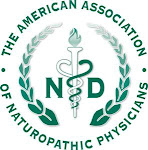Michael Cronin, ND
AANP President
AANP President
 |
| The entrance to S-VYASA's Prashanti Kutiram Campus |
The ICYN was
sponsored by the state government of Karnataka’s Department of Ayurveda, Yoga
& Naturopathy, Unani, Siddha and Homoeopathy (AYUSH). They see Naturopathy
as an intrinsic part of the healthcare system and just this week announced that
10% of the state's overall healthcare budget would be dedicated to patients
receiving AYUSH care. There is an epidemic of non-communicable disease in India,
including diabetes, and cardiovascular diseases are the country’s leading cause
of death. There are also other provisions in the works to improve the public
access to Naturopathy care, including adding outpatient naturopathic services
in all municipal hospitals.
The scope of
practice in Naturopathy includes hydrotherapy, fasting, diet therapy, massage,
Acupuncture and Yoga. It does not include medicine administered orally, Homeopathy
or Botanical Medicine. Steps are being taken to bridge this divide in order to use
evidence-based practices, following the established principles of Naturopathy.
Historically, Homeopathy, Ayurveda, and Unani (Persian herbal medicine, widely
practiced in Southern Asia) have existed as separate branches of traditional
knowledge systems in India and traditional Chinese medicine is not practiced.
 |
| The Jindal NatureCure Center |
Naturopathic evidence-based
research is alive and well in India. At S-VYASA, where we are staying, they
have Ph.D. candidates in Yoga who are focusing on many aspects of naturopathy. One
Ph.D. candidate I spoke with is researching hydrotherapy for hypertension,
another on diabetes and a third on migraines. There is much published work on
the physiologic effects of meditation as well as work towards understanding
which specific yoga asanas (postures), breathing, relaxation and meditative
techniques are best for specific conditions.
An
international working group on naturopathy and yoga convened the day after
the conference with participants from over 20 countries. There were four
subgroups established, including education, research, clinical practice and
regulatory advocacy. Participants from the United States included representatives
from Harvard Medical School, the Department of Defense, the Samueli Institute
and the AANP. The working group is being funded by the State government of
Karnataka’s Department of AYUSH. The government perceives the promotion of
Naturopathy and Yoga as not only good for public health, but also an economic
engine, separate from their conventional medical tourism. The state has 3
colleges and many hospitals/sanatoriums including, one 275-bed facility and
another 200-bed facility. There is clearly dynamic development of Karnataka’s medical
tourism capacity and naturopathy is seen as an important component.
The Indian
educational system offers a Science pre-university “stream” in what would be
considered an American 11th and 12th grade. They have a four-year
academic program and a fifth year of internship. They have also established a two-year
advanced degree program offering an MD in Naturopathy.
Learning about
India’s unique relationship with Naturopathy was very exciting, but the
enthusiasm of the students, doctors, educators and officials was by far the
best part. They are all so pleased to connect with the North American
profession, as we are to connect with them!
Namaste,
Michael
Cronin, ND




Great to see this report...Hope this will bring more and more cooperation between North American and Indian Naturopathy physicians.A vision of evidence based,Global Naturopathic Medicine possible.
ReplyDeleteDr.Manu Pradeesh BNYS (RGUHS)
Thank you Dr. Cronin for writing elaborately on the Development of Naturopathic Medicine in India. I was there in the Conference and was also part of the Education Symposium where you delivered your lecture.
ReplyDeleteI would like to repeat and raise the aspirations of Indian Naturopathy Community (which I had raised with you in the Conference). One, the Graduates and Naturopathic Medical Colleges in India are very enthusiastic about a possible future relationship between American and Indian Naturopathic Community and we would want it to be developed further by creating some exchange mechanisms. Two, Indian Naturopathy Graduates opting for further studies in North American Naturopathic Colleges should be given adequate credits for their Indian Professional Education in Naturopathy.
I wish this relationship only grows with time as we have a lot to learn from each other as a Profession and Practice!
Dr. Rajesh Kumar Singh, BNYS
http://drrajeshks.blogspot.com